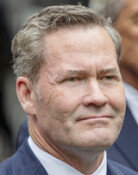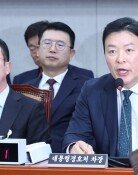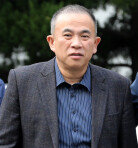Education Ministry reveals its reform achievement
Education Ministry reveals its reform achievement
Posted November. 20, 2024 07:51,
Updated November. 20, 2024 07:51
The Ministry of Education presented its report on Tuesday on the educational achievements of the first half of the Yoon Suk Yeol administration. Highlighting initiatives such as the introduction of the Neulbom School, entrance exam reform, and the creation of a university innovation ecosystem, the ministry asserted that these reforms "are taking root in the field and will bear tangible results in the second half of the term." While the Neulbom School for first-year elementary students has eased the burden of childcare, critics argue that other policies are far from transformative and have even led to adverse side effects.
The Ministry of Education asserted that the “killer question exclusion policy is taking hold,” particularly in the context of college entrance exam reform. However, fostering creative talent requires a fundamental overhaul of the multiple-choice college entrance exam system. Claiming that adjusting question difficulty constitutes a reform capable of delivering “bold changes in the educational field” appears misguided, raising doubts about whether this policy effectively impacts the educational landscape. When the government abruptly announced the exclusion of killer questions in June last year, the number of repeat test takers surged to 157,000, marking a 28-year high amid expectations of a "watered-down college entrance exam." This controversy over killer questions may have also contributed to private education expenses for elementary, middle, and high schools reaching a record-breaking 27.1 trillion won last year—a figure comparable to Samsung Electronics’ research and development spending.
This year, the second year of the college entrance exam without killer questions, the government’s abrupt increase in medical school enrollment resulted in 161,700 repeat test takers, surpassing last year’s figure. Notably, the 10 high schools that sent the most students to medical schools last year experienced a reversal, with the number of repeat test takers being 1.2 times higher than the number of current high school seniors. Despite a declining fertility rate and a shrinking number of high school students, competition for college entrance exams remains intense. Instead of easing, the growing number of repeat test takers has led to a sharp increase in social costs. Additionally, college education is being disrupted as students drop out to retake exams. Labeling this situation as an achievement contradicts the shortcomings of the current college entrance exam policy, which fails to address these systemic issues.
Education reform ranks as the second lowest among the government's four significant reforms, trailing only medical reform. While pension and labor reforms, though not yet implemented, have at least outlined clear directions, education reform has yet to define proper tasks. It is particularly frustrating that the National Education Commission, which was established to develop long-term education policies, continues to focus on the exclusion of killer questions as the centerpiece of college entrance exam reform, even halfway through the current administration's term. Next year marks the full implementation of the high school credit system, a major transformation in high school education. Stabilizing this planned system must be a priority. To ensure this, the government must avoid introducing impromptu policies that risk causing further confusion in the educational field.
Headline News
- Concerns mounting over S. Korea’s potential involvement in Ukraine war
- Democratic Party leader Lee indicted on embezzlement
- Korean researchers develop world’s first wireless brain signals recorder
- Seoul declares official English name of ‘Hangang River’
- Judo athlete dreams of becoming Korea's first Grand Slam champion







